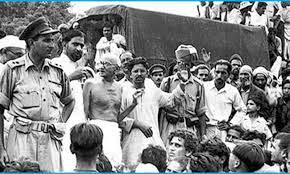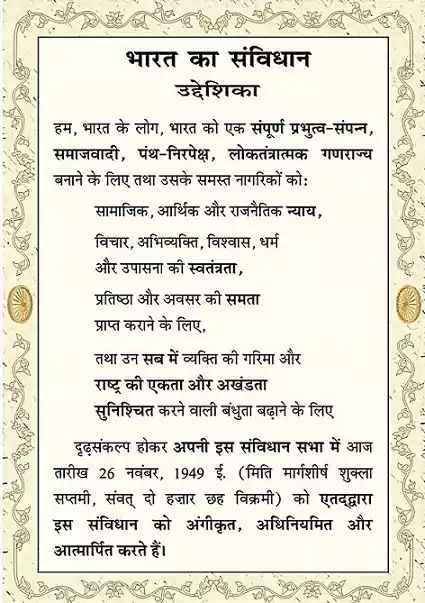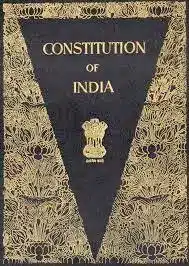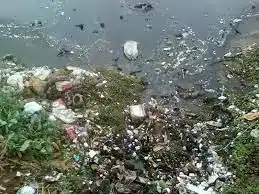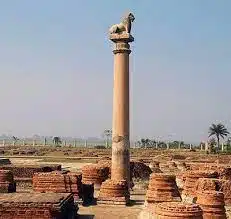MCQs On Vitamins And Minerals :
1. The total number of essential vitamins required for the proper functioning of the human body is
(a) 12
(b) 13
(c) 15
(d) 22
Sol: (b) 13.
2. Which of the following vitamins cannot be produced by our body?
(a) vitamin A
(b) vitamin K
(c) vitamin C
(d) All of the above
Sol: (d) All of the above.
3. Which of the following minerals controls growth and body weight?
(a) Iodine
(b) Calcium
(c) Phosphorous
(d) All of the above
Sol: (a) Iodine.
4. Which of the following vitamins is called a water-soluble vitamin?
(a) vitamin A
(b) vitamin D
(c) vitamin C
(d) vitamin K
Sol: (c) vitamin C.
5. Which of the following helps in the regulation of blood volume and blood pressure?
(a) Iron
(b) Iodine
(c) Sodium
(d) Phosphorous
Sol: (c) Sodium.
6. Which of the following are examples of macro minerals?
(a) Sodium
(b) Calcium
(c) Chloride
(d) All of the above
Sol: (d) All of the above.
7. Excessive intake of calcium in our diet results in
(a) Stroke
(b) Diarrhoea
(c) Constipation
(d) Kidney stones
Sol: (d) Kidney stones.
8. Which of the following vitamins are called fat-soluble vitamins?
(a) vitamin B
(b) vitamin E
(c) vitamin C
(d) vitamin B2
Sol: (b) vitamin E.
9. Onions, broccoli, fresh fruits, milk, eggs, iodized salt are good sources of
(a) Phosphorus
(b) Sodium
(c) Iodine
(d) Both (b) and (c)
Sol: (d) Both (b) and (c).
10. Passion fruit and pomegranate are rich in which mineral?
(a) Phosphorous
(b) Calcium
(c) Manganese
(d) None of the above
Sol: (a) Phosphorous.
11. The cause of short-term or acute vitamin A poisoning is due to
(a) Eating the liver of Mule deer
(b) Eating the liver of Buffalo
(c) Eating the liver of Ostrich
(d)Eating the liver of Polar bear
Sol: (d) Eating the liver of Polar bear.
12. Which of the following is the most essential nutrient for a woman during her initial stages of pregnancy to prevent birth defects?
(a) Thiamin
(b) Folic acid
(c) Vitamin C
(d) Vitamin E
Sol: (b) Folic acid.
13. Which of the following food sources has the highest levels of vitamin C?
(a) Parsley
(b) Broccoli
(c) Black currants
(d) Orange juice
Sol: (c) Black currants.
14. Which of the following vitamin helps in blood clotting?
(a) Vitamin A
(b) Vitamin C
(c) Vitamin D
(d) Vitamin K
Sol: (d) Vitamin K.
15. Which is the leading cause of blindness in children worldwide?
(a) Glaucoma
(b) Cataracts
(c) Colour blindness
(d) Vitamin A deficiency
Sol: (d) Vitamin A deficiency.
16. Which of the following vitamin deficiency causes Beriberi?
(a) Vitamin B1
(b) Vitamin B2
(c) Vitamin B6
(d) Vitamin B12
Sol: (a) Vitamin B1.
17. Who is most likely to develop scurvy – A vitamin C deficiency?
(a) A pregnant woman
(b) A malnourished child
(c) A long-time alcoholic
(d) A person with the eating disorder anorexia nervosa
Sol: (c) A long-time alcoholic.
18. Which of the following vitamin functions as both, hormone and visual pigment?
(a) Thiamine
(b) Retinal
(c) Riboflavin
(d) Folic acid
Sol: (b) Retinal.
19. Which of the following nutrient deficiency causes megaloblastic anaemia?
(a) Folic acid
(b) Niacin
(c) Pyridoxine
(d) Cobalamin
Sol: (a) Folic acid.
20. Which of the following is a fat-soluble vitamin?
(a) Vitamin B
(b) Vitamin C
(c) Vitamin B12
(d) Vitamin K
Sol: (d) Vitamin K.
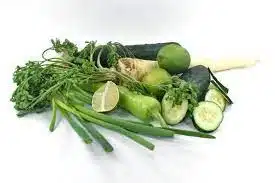
21. Which of the following diseases is caused by the deficiency of Niacin?
(a) Scurvy
(b) Rickets
(c) Pellagra
(d) Pernicious Anaemia
Sol: (c) Pellagra.
22. Which of the following vitamins serves as a hormone precursor?
(a) Vitamin A
(b) Vitamin C
(c) Vitamin D
(d) Vitamin K
Sol: (c) Vitamin D.
23. Which of the following is a component of the coenzyme A?
(a) Retinol
(b) Pyridoxine
(c) Retinoic acid
(d) Pantothenic acid
Sol: (d) Pantothenic acid.
24. Which of the following vitamins is also known as cobalamin?
(a) Vitamin B11
(b) Vitamin B2
(c) Vitamin B6
(d) Vitamin B12
Sol: (d) Vitamin B12.
25. Which of the following statements is false about Ascorbic acid?
(a) It shows antioxidant activity
(b) It is a strong reducing agent
(c) It can be synthesized in the body
(d) None of the above
Sol: (c) It can be synthesized in the body.
26. Which of the following vitamins has a coenzyme function?
(a) Vitamin A
(b) Vitamin C
(c) Vitamin B
(d) All of the above
Sol: (d) All of the above.
27. Which of the following food source are the best sources of vitamin A?
(a) Sweet potato
(b) Poultry
(c) Legumes
(d) Dairy products
Sol: (a) Sweet potato.
28. Which of the following is a water-soluble vitamin?
(a) Vitamin B1
(b) Vitamin C
(c) Vitamin B2
(d) All of the above
Sol: (d) All of the above.
29. Weakness in muscles and increase in the fragility of red blood cells is caused due to the __________.
(a) Deficiency of vitamin E
(b) Deficiency of vitamin D
(c) Deficiency of vitamin C
(d) Deficiency of vitamin A
Sol: (a) Deficiency of vitamin E.
30. Which of the following is the scientific name of Vitamin K?
(a) Ascorbic acid
(b) Phytonadione
(c) Tocopherol
(d) Pantothenic Acid
Sol: (b) Phytonadione.
31. How many essential nutrients does a plant require?
(a) 15
(b) 17
(c) 16
(d) 20
Sol: (b) 17.
32. Which of the following minerals plays a major role in energy storage and transfer of ADP into ATP molecules?
(a) Phosphorus
(b) Magnesium
(c) Molybdenum
(d) None of the above
Sol: (a) Phosphorus.
33. Plants absorb nutrients through their _______.
(a) Roots
(b) Stem
(c) Leaves
(d) Flowers
Sol: (a) Roots.
34. Which of the following minerals helps in improving both the quantity and quality of dry matter in leafy vegetables and protein in grain crops?
(a) Iron
(b) Copper
(c) Nitrogen
(d) Molybdenum
Sol: (c) Nitrogen.
35. Which of the following statements is false about nutrition?
(a) Nitrogen and phosphorus are macronutrients
(b) Plant hormones are nutrients
(c) Manganese and molybdenum are micronutrients
(d) Nutrition provides energy for carrying out various functions.
Sol: (b) Plant hormones are nutrients.
36. Which of the following minerals is required by the plants in large quantities?
(a) Chlorine
(b) Phosphorus
(c) Manganese
(d) Molybdenum
Sol: (b) Phosphorus.
37. Chlorosis is yellowing of the leaves, caused due to the deficiency of ________.
(a) Zinc
(b) Potassium
(c) Manganese
(d) All of the above
Sol: (d) All of the above.
38. The main mode of nutrition in plants is __________.
(a) Autotrophic
(b) Heterotrophic
(c) Saprophytic
(d) None of the above
Sol: (a) Autotrophic.
39. Which of the following minerals is required for the synthesis of chlorophyll?
(a) Copper
(b) Potassium
(c) Nitrogen
(d) Iron
Sol: (d) Iron.
40. Which of the following minerals is a constituent of cell membranes and nucleic acids?
(a) Zinc
(b) Potassium
(c) Phosphorous
(d) Manganese
Sol: (c) Phosphorous.
Download Pdf
For more MCQs, click here.

